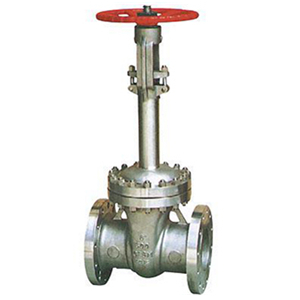Common defects and preventive measures for gate valves
Posted: 02/15/2019 14:31:43 Hits: 400
Gate valves are important components of the oil and gas transporting device. The common defects of several gate valves in use are as follows:
Leakage between valves
First, check whether the coupling bolts that connect gate valves are tightened. If they are not tightened, the gasket ring and the flange sealing groove surface are not fully combined, which may cause leakage. The bolts and nuts should be inspected in order, and all bolts should be tightened until the gasket ring is pressed. Next, check the size and accuracy of the gasket ring and the flange seal groove. If the seal contact surface is not with the right size or is too rough, the gasket ring should be repaired or replaced. In addition, check whether there are pitting corrosion, sand holes, or impurities in the contact surface of the gasket ring and the flange sealing groove. If such defects exist, re-weld, repair or clean them accordingly.
Bonnet leakage
Bonnet leakage is mainly manifested in the leakage of the packing seal. First, check that the seal is selected correctly and that it matches the seal groove. If there is such a problem, replace the seal or repair the seal groove. Next, check the seal for burrs, fracturing, etc. And replace the seal if the above defects exist. Again, check the seal faces of each seal groove for roughness or other defects. If there are defects, eliminate the defects or repair the damaged parts.
The bonnet or bracket has a packing that is sealed by compression. The installation of these packings should be checked. If the upper and lower packings are installed upside down, they should be removed and reinstalled according to the correct methods. Pay special attention to the packing seal joint surface. And then, check whether the accuracy of the contact surfaces of the seals meets the specified requirements.
Valve body cavity leakage
During the casting process, defects such as sand holes and pitting sometimes may occur, which are difficult to be found during machining. Once pressure is applied, hidden casting defects will be exposed. If this happens, the valve will need to be re-welded, repaired, or replaced.
Leakage at the valve seat plate
Leakage at the seat plate is the most common defect in installing or repairing gate valves. Generally, it can be divided into two categories: one is the leakage of the sealing surface, and the other is the leakage of the root of the sealing ring.
First, the accuracy of the sealing surface of the valve seat and the valve plate should be checked. The sealing surface should be at least ground. If the surface accuracy is too low, it should be removed and re-ground. Next, check the sealing surface for defects such as pitting, indentation, blisters, cracks, etc. If such defects exist, replace the valve plate or the valve seat. For a valve seat with a compression spring, it should be checked that the elasticity of the compression spring is in accordance with the requirements. If the elasticity is weakened, the compression spring should be repaired. In addition, check if the T-shaped joint between the valve plate and the valve stem is too loose and cause the valve plate to be inclined during the pressing process. In this case, the valve plate should be removed and adjusted to the optimal size.
Foreign bodies such as welding slags, iron filings, impurities are easy to enter the internal opening of the valve body during the installation process, and such debris should be cleaned before installation. If you forget to clean or clean it thoroughly, it will cause the valve plate to close less than the expected depth and leak. In this case, remove the valve body and clean it again. When installing the valve seat, it should be installed with a specialized tool, and the valve seat should be inspected for installation. If the thread is not screwed to the expected depth, leakage will occur at the valve seat. In this case, the specialized tool should be used again for installing the seat.

